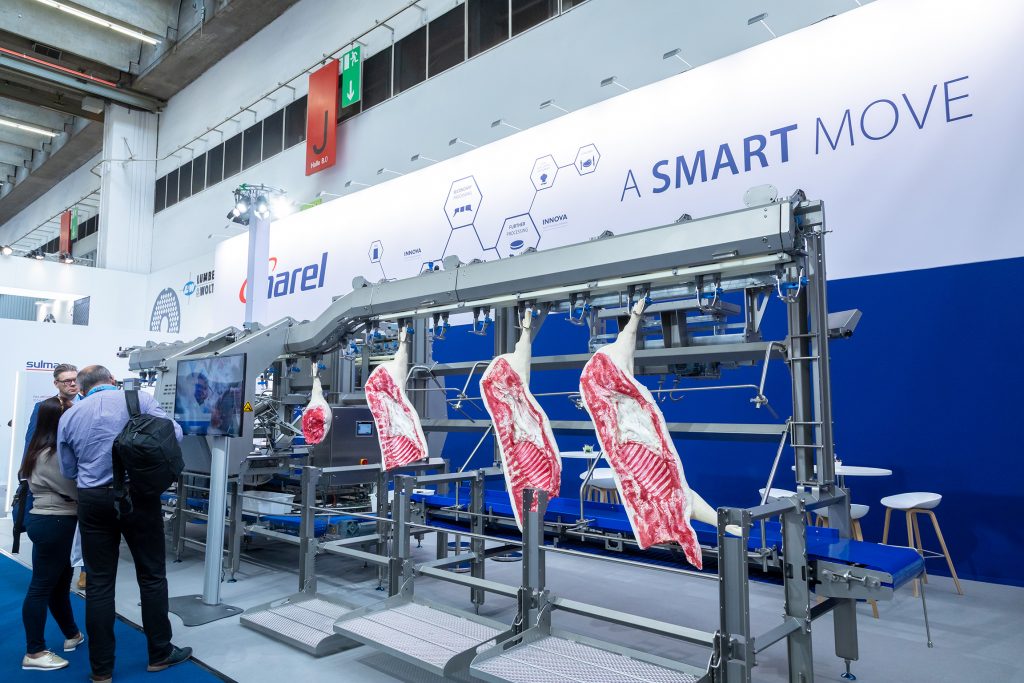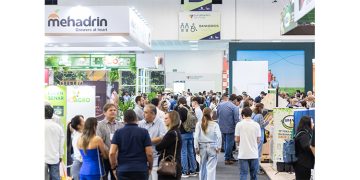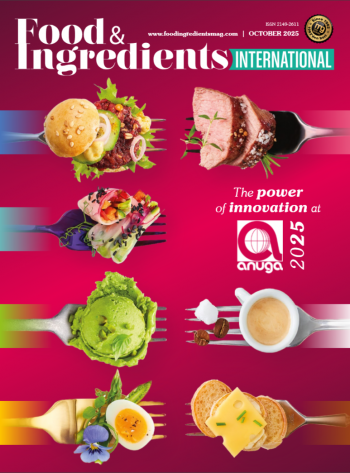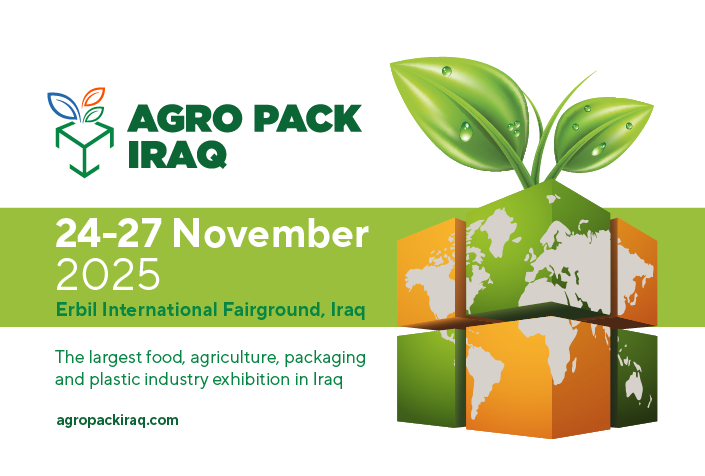Natural, sensitive and varied in size and shape – the product meat requires special care and precision in processing and production. Where humans reach their limits, automated solutions and digital processes offer advantages, especially since qualified skilled workers are hard to find. Consequently, the topics of automation and digitalization are high on the agenda of IFFA 2022, which will bring together the leading companies in the international meat and protein industry from May 14 to 19, 2022.
A look into the future: the smart factory
The development in the field of automation and digitization is taking place very quickly. At the top of the innovation pyramid is the smart factory, the intelligent production facility that is highly digitized and networked and operates largely autonomously. This is made possible by new technologies that network not only people, but also applications and objects (Internet of Things) and enable machines to analyze data, “learn” from it and create corresponding action patterns (artificial intelligence). In this way, the smart factory can make processes efficient and cost-effective and improve overall plant effectiveness, all while complying with strict quality and food safety requirements. However, the road ahead is long, and most meat and protein processing plants, large and small, still have a long way to go. [1]
 Data along the process chain
Data along the process chain
In order to assess meat quality and food safety, data is collected and analyzed in real time along the entire process chain. This is done primarily with the help of software, sensors and industrial image processing. The data collected during the course of the process can be assigned to specific sub-processes, a major advantage as the degree of automation increases and individual processes become more correlated. In the event of disruptions in the production process, cause-effect relationships are quickly identified, even without lengthy analyses. In this way, process lines can be maintained while the process is still running and downtimes can be eliminated or prevented. The technologies that make this possible are summarized under the term “artificial intelligence” (AI). AI reduces risks and promises more efficiency, more transparency, more safety for consumers and companies, and complete documentation and traceability of the process chain, from origin to sale. The problem: In the meat industry, the various production lines are often not yet networked with each other, data exchange is interrupted and cannot be used for process optimization. In addition, data acquisition and exchange are complicated by different quality seals and classifications. [2]
Transparent production
The most common systems for managing and controlling production in real time are ERP (“Enterprise Resource Planning”) and MES (“Manufacturing Execution System”). Their function includes production planning, sequence planning, machine data and production data acquisition, maintenance control, quality management and order control. By continuously capturing and recording production data, the systems immediately detect when certain parameters deviate from the norm – and thanks to AI, they immediately assign the underlying cause to the problem. Misproductions can thus be significantly reduced or avoided altogether. The entire production process is visually displayed, deviations are immediately visible. [3]
The be-all and end-all: secure data
The collection, storage and evaluation of data volumes (big data) requires a high-performance network infrastructure within the production facility. 5G is the prerequisite for the transmission of data in real time, cloud solutions ensure the storage and availability of large amounts of data at any time and any place. Important information such as operating hours, pressure curves, error messages and machine status are stored in the cloud and can be viewed at any time and on mobile devices at any location. In the meat and protein industry, cybersecurity is particularly important, as hacker attacks can cripple entire supply chains. Thanks to easy access and a lack of security management, criminals can quickly gain access to production systems – with fatal consequences, not only for business operations, but also for the company’s reputation. That’s why the topic of cyber security should be a matter for the boss and have top priority. An initial countermeasure can be the decoupling of production and administrative networks. Equally important is the issue of data protection: A secure cloud environment must comply with all data protection and security regulations in accordance with the DSGVO [4] (German data protection regulation).
 Robot use in the food industry
Robot use in the food industry
The use of robots in the meat and protein industry is not yet comparable to that in the automotive industry or electronics manufacturing. However, the switch from specialized machines to industrial robots is in full swing. In companies with 250 to 1000 employees, their share is already around 50 percent, with a smooth transition between conventional machines and those with integrated robotics. By using industrial robots, the meat industry could benefit from the technological progress being driven by the automotive and electrical engineering industries. The robot is faster than working by hand because: It doesn’t need breaks or vacations, and it doesn’t drop out due to illness. And the shortage of labor, especially in less attractive work environments with repetitive tasks, continues to drive the development and use of robots.
But there are still reservations: too slow, too space-consuming, unsuitable for cold and damp environments – these are the objections, at least in slaughterhouses. But robots are low-maintenance, hygienically designed and equipped with suitable software for control, simulation, visualization, object recognition and much more. These are ideal conditions for contact with food, especially since their versatility also promises considerable productivity gains. Robots can cut, pack, wrap, sort, pick up and place. The Danish Technological Institute is researching multifunctional robotic work cells that could replace line production and revolutionize the entire process in the medium term. The robotic cell is to process pork sides independently in various steps with the help of AI. This is done in as many operations as possible at once instead of small operations one after the other. Different productions can run in parallel, enabling a strong product mix without the constraints of line production. Initial prototypes of the robotic cells should be applicable by the end of 2022. Thus, in the near future, the meat industry will also see the introduction of what has long been reality in other industrial sectors: humans control and steer, while robots take over all manual tasks. [5]
High requirements for quality control
Only three percent of robots are sold to the food industry. Therefore, the degree of automation is still low compared to other industries, and there is a lot of room for improvement. In the areas of control, inspection, traceability and quality management, however, the legal requirements are so high that humans can no longer reliably fulfill them as a control authority in industrial production. This is why automatic inspection systems are used, for example, to check barcodes or products for foreign objects. They work quickly, precisely and reliably over the long term. The inspection systems range from simple sensors to intelligent, i.e. self-learning camera systems. This is where automation and digitization merge. One does not work without the other. [6]
[1] Christian Falkenstein, Shaarath Thondanure und Yael Friedberg: „Ein Blick in die Fabrik der
Zukunft“, in: Fleischwirtschaft 7/2021
[2] Christian Falkenstein, Shaarath Thondanure und Yael Friedberg: „Ein Blick in die Fabrik der
Zukunft“, in: Fleischwirtschaft 7/2021
– Tobias Hennes: „Die Wurstwarenproduktion der Zukunft“, in: Fleischwirtschaft 2/2018
– Proxia Software AG: „Spurensuche im Shopfloor mit Process Mining“, in: Fleischwirtschaft 12/2021
– Die nahe Zukunft der Geflügelverarbeitung:
https://marel.com/de/aktuelles/die-nahe-zukunft-der-geflugelverarbeitung
[3] Proxia Software AG: „Spurensuche im Shopfloor mit Process Mining“, in: Fleischwirtschaft 12/2021
Handtmann:
https://www.handtmann.de/fuell-und-portioniersysteme/produkte/funktionen/digitale-loesungen
[4] www.handtmann.de
Die nahe Zukunft der Geflügelverarbeitung:
https://marel.com/de/aktuelles/die-nahe-zukunft-der-geflugelverarbeitung
[5] Niels-Henrik Grothe: „Industrie 4.0 in der Fleischverarbeitung“, in: Fleischwirtschaft 12/2021
– Tobias Hennes: „Die Wurstwarenproduktion der Zukunft“, in: Fleischwirtschaft 2/2018
– https://www.kuka.com/food#Robots
– https://update.multivac.com/de/story-detail/696-automation-in-meat-processing-offers-a-wide-range-of-benefits/




















